Cannabis Glossary: Letter D
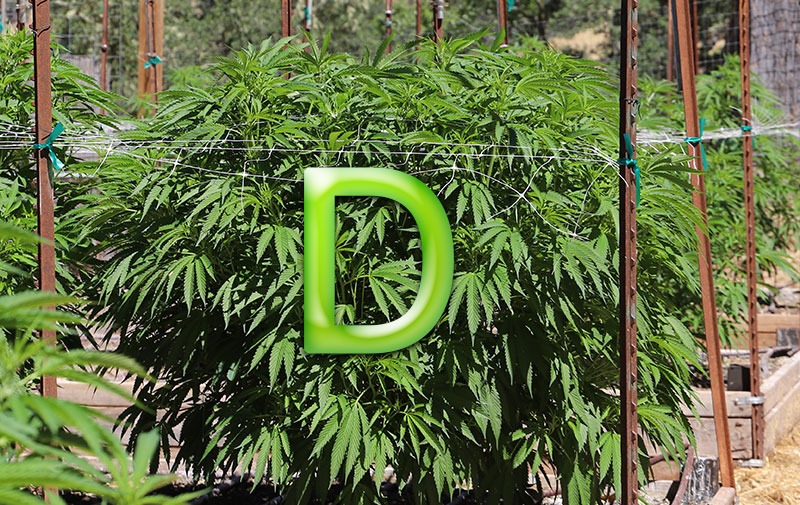
Fertiliser

With the help of certain Fertilisers plants receive the vital nutrients they need. Cannabis plants under artificial light or outdoors can thus reach their maximum potential. On the one hand, there are the so-called non-mineral nutrients such as carbon, hydrogen and oxygen, which are taken from the air and water. On the other hand, there are the mineral nutrients, most of which are taken up from the substrate or nutrient solution. Mineral nutrients are divided into three groups: Macronutrients, secondary nutrients and the trace elements (micronutrients). There are mobile nutrients such as nitrogen (N), phosphorus (P), potassium (K), magnesium (Mg) and zinc (Zn). These nutrients can be moved to other parts of the plant when needed. The immobile nutrients such as calcium (Ca), boron (B), chlorine (Cl), cobalt (Co), copper (Cu), iron (FU), manganese (Mn), molybdenum (Mb), silicon (Si) and sulphur (S) cannot be shifted to other parts of the plant.
Plants should be supplied with a sufficient amount of nutrients without overfertilisation and accumulation of fertiliser salts. If a cannabis plant is placed in a large pot with a nutrient-rich soil(all-mix), fertilising may not be necessary for the first few weeks because the nutrients present in the soil are sufficient. With soilless substrates, fertiliser must be applied from the beginning. The most important thing is to always follow the manufacturer's instructions on the fertiliser label exactly. In the course of life, the metabolism of a cannabis plant changes and with it the need for certain nutrients. In the growing phase, plants need a large amount of nitrogen (N) and a considerable amount of potassium and phosphorus to develop green leaves and grow. A special growth fertiliser with a high proportion of nitrogen should therefore be used in this phase. In the flowering phase, cannabis plants mainly need potassium, phosphorus and calcium, which are administered with the help of a special flowering fertiliser.
Find out more about fertilising here:
Fertilisation scheme:
The Fertilisation scheme of the respective fertiliser manufacturer indicates exactly how much of the corresponding fertiliser must be given in which phase. Most fertiliser manufacturers offer this fertiliser schedule in tabular form. It is advisable to follow the dosage information exactly in order to avoid over- or under-fertilisation.
Dolomitic lime
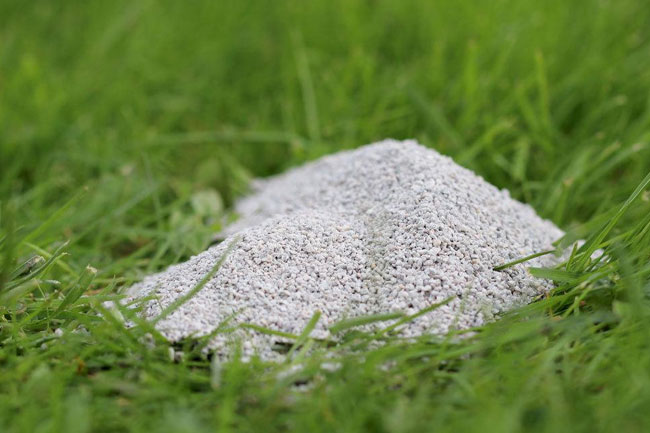
Dolomite lime helps regulate the pH value and ensures improved availability of phosphates. It consists of calcium and magnesium and is extracted from dolomite rock. Dosage: If the pH value is to be increased by 1, add 3 cups of fine dolomitic lime to 25 litres of substrate.
Advantages of dolomitic lime in cultivation:
- a pH value that is too low is raised to the correct level
- The magnesium contained promotes a strong leaf green, as the build-up of chlorophyll is supported
- The soil life is vitalised so that a beautiful crumb structure is created
- The fertiliser is optimally absorbed, resulting in better growth and lush flowering.
Drainage
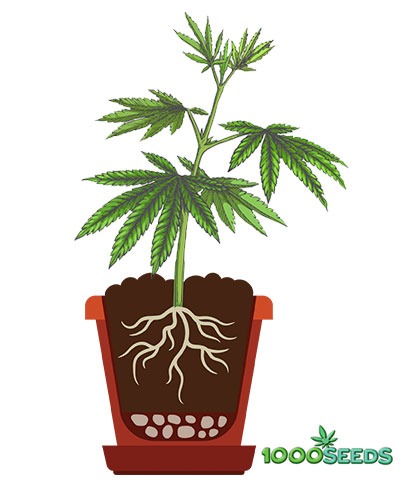
A planting medium or the soil has good drainage if the water can run off evenly and in a relatively short time. If the drainage is poor, the water remains in the pot or in the soil and the roots do not get enough air. Therefore, a planter must always have enough holes in the bottom so that excess water can drain off. When plant pots are placed in saucers, care must be taken to ensure that the pot and thus the roots do not stand in water, as this leads to root rot and mould. It is always advisable to place a layer of expanded clay at the bottom of the plant pot so that optimal drainage is ensured.
Dark phase
Within the photoperiod, the dark phase is an important component. Cannabis plants only start to flower when they are in total darkness for 12 continuous hours a day. Flowering is therefore initiated by this 12-hour dark phase. If during flowering the dark phase is interrupted for several minutes or more than 2x during flowering, the risk is high that the plants will return to the growing phase. Maturation will thus be delayed and further problems such as hermaphroditism may occur.
Decarboxylation
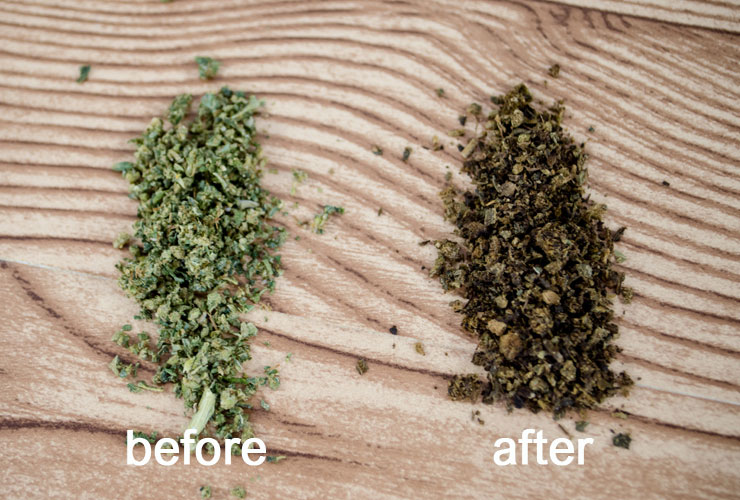
Decarboxylation involves heating dried cannabis at a low temperature to convert 'inactive' acidic cannabinoids such as THCA and CBDA into 'active' THC and CBD. Most people decarboxylate their cannabis to achieve higher potency in orally consumed products such as edibles and tinctures.
You can find more on this topic here:
Deep Water Culture
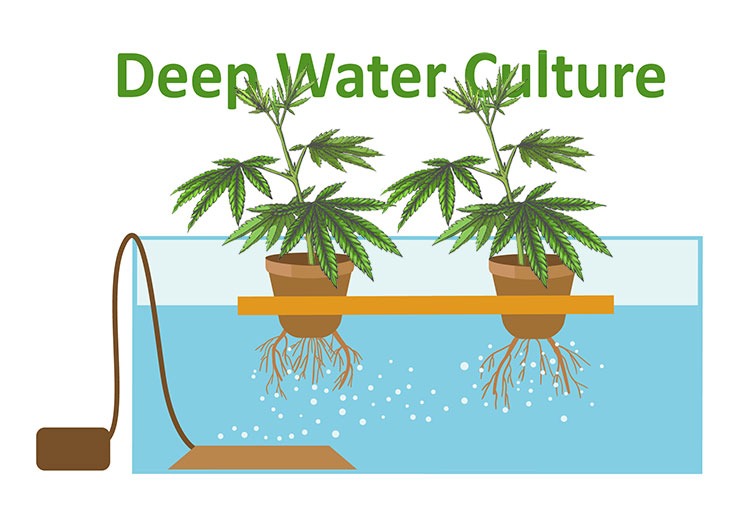
Deep Water Culture (DWC) is a form of hydroponic cultivation. Here, the roots of the plant dangle in nutrient solution. The nutrient solution is constantly supplied with oxygen by an air pump and a bubbling stone. The plant itself is placed in a relatively small lattice pot filled with expanded clay or rock wool. The medium only serves to stabilise the plant.
The term Deep-Water-Culture has arisen because the roots are deeply immersed in the nutrient solution. It is believed that the acidic and nutrient-rich water surrounding the plant roots is the deciding factor why DWC plants grow bigger and develop faster. Cannabis plants in deep water systems grow quickly and can absorb nutrients unhindered and always immediately.
Learn more about deep water culture:
Dabbing/Dabber
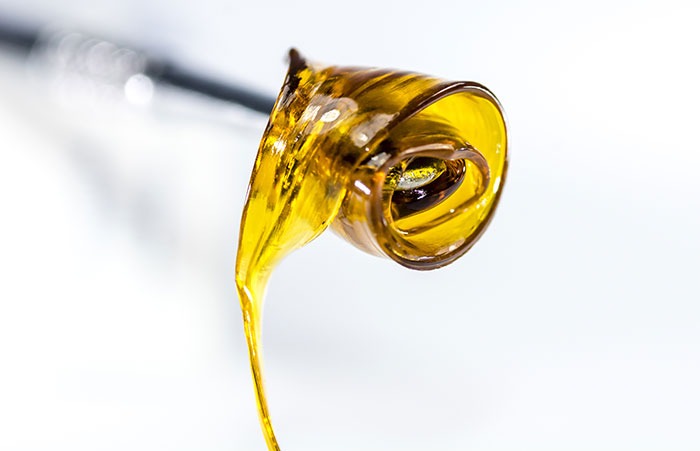
Dapping is a method of consuming THC in a highly concentrated form. With the help of a so-called dabber, a small amount of THC and other cannabinboids, which are present in waxy or oily form, is ingested and then used with an oil bong, a special vaporizer for extracts or within food.
When talking about a "dab", wax, shatter or BHO can be meant. The concentrated form of THC is particularly strong and produces a violent high. Dabbing has now been popular for more than 10 years and always refers to taking small doses of wax- or oil-like extracts on a hot surface or on a glass or titanium nail.
The (glass) nail of oil bongs is heated and made to glow with a blowtorch or torch fire during dabbing. On the hot nail, the small amount of concentrate that was brought onto the nail with the dabber finally evaporates.
Thanks to
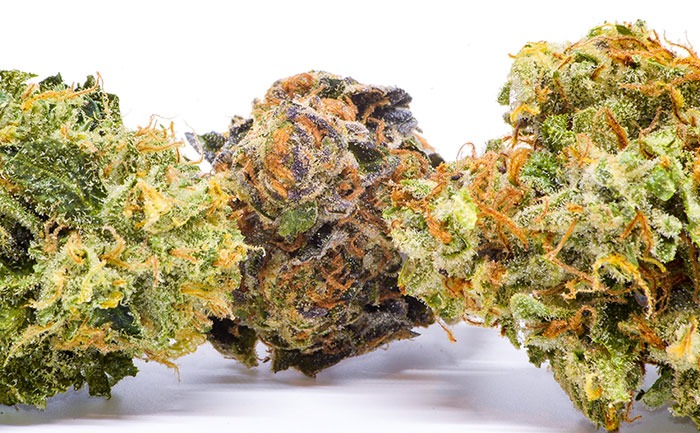
In cannabis culture, dank always means a strong and very high quality cannabis. The word has been used in English-speaking countries for a long time to describe something that is great and extra cool. "Dank" was used to describe marijuana long before cannabis extracts became so popular.
In general, a high concentration of trichomes indicates a plant with intense cannabinoid production, and this naturally leads to potent cannabis. A high concentration of trichomes indicates a strain that is sticky, hairy and overly fragrant, in other words, dank. To obtain high quality cannabis, the right growing conditions must be ensured, high quality seeds used, and then properly harvested and dried.
Diesel
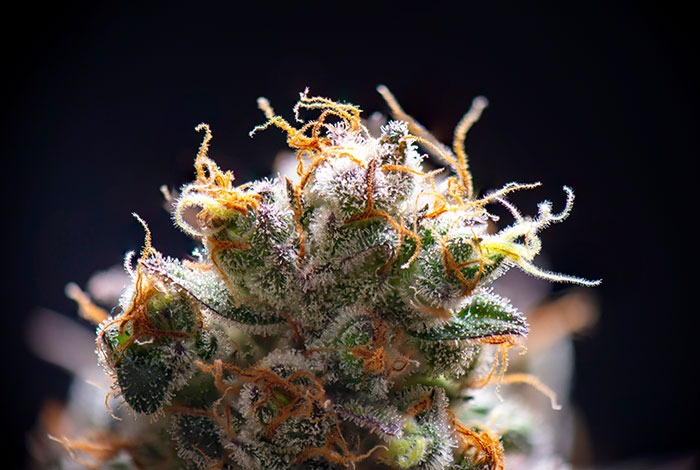
Diesel is a special cannabis strain that originates from New York. The sativa hybrid is the result of crossing a Mexican sativa and an Afghani. It is suspected that there is a direct connection to Chemdog and OG Kush genetics. Many other varieties are the result of crossing with Diesel, for example: Sour Diesel or NYC Diesel.
The flowers of the Diesel are large, dense and have orange hairs. The trichome crystals are particularly large and clearly visible. The strain is easy to grow and tends to have a good THC content, around 20%. With the stimulating and energizing effect, the weed of this strain is especially good for daytime. Users experience a boost in energy as well as creativity and also an improved mood. Cannabis patients use this strain to relieve depression and reduce feelings of stress.
The tepene profile of the Diesel is characterised by intense citrus notes and a classic Diesel aroma.
Read more:
Diffuser
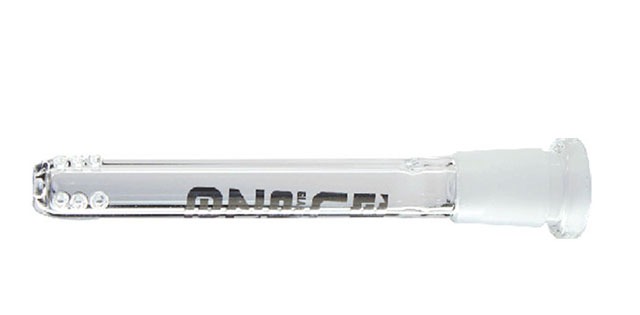
A Diffuser is a special type of glass adapter (glass tube) used in bongs or bubblers. Unlike ordinary bong adapters, the tube has slits or holes at the bottom. This distributes the smoke evenly and creates smaller bubbles. The smoke is better swirled in the water, thus purified and milder.
Dinafem
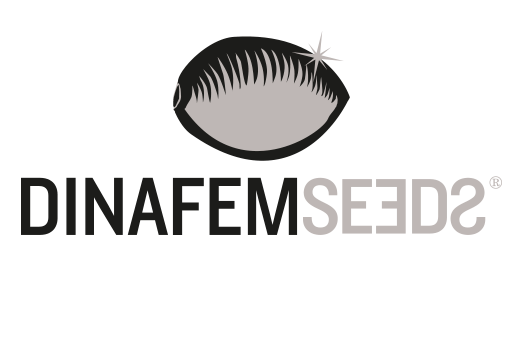
Dinafem is a Spanish seed bank that produces cannabis seeds. The company was founded in 2002 and has since developed a variety of unique cannabis strains. Dinafem only produces feminised and autoflowering seeds. You can buy all Dinafem seeds at 1000Seeds.
Drip system
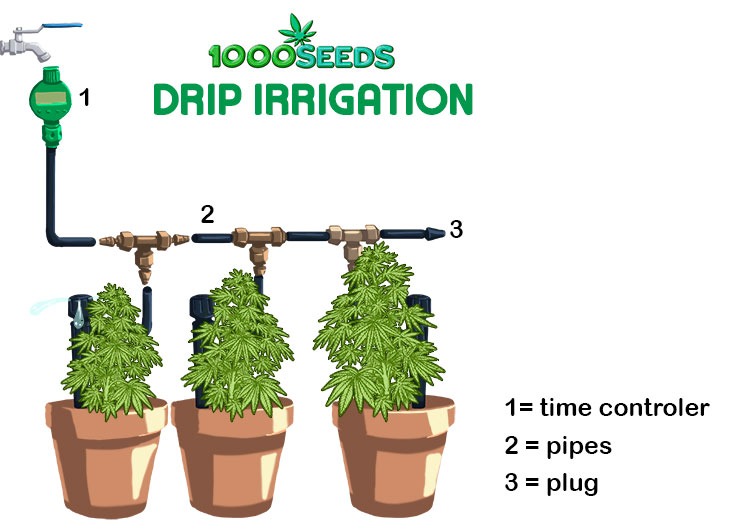
Drip System Outdoor
In hydroponic cultivation, the term drip system refers to one of the skin-based methods of hydroponic cultivation of plants. In drip irrigation systems, the nutrient solution is dripped onto the planting medium with the help of drip emitters. Drip systems are used for both indoor container plants and outdoor growing. They are easy to set up and are water efficient because they reduce the amount of water lost through evaporation, leaching and drainage. So the plants only get what they need.
In a drip system, the nutrient solution is pumped through a hose from a reservoir and delivered to the planting medium. The nutrient solution drips out of a hose, moistens the planting medium and runs back out of the plant pot via the roots. The excess water runs out of the bottom of the plant pots and is used again and again in recirculating systems (recovery systems). Non-circulating systems are mainly used for outdoor cultivation.
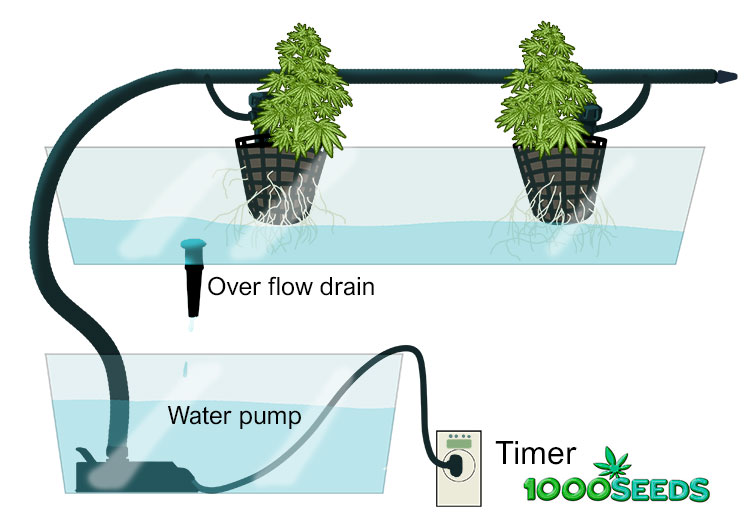
Indoor Drip System
In recirculating systems, close attention must be paid to the quality and dosage of nutrients, as this can change constantly as the plants take up nutrients. Drip systems are built from individual elements, water-carrying plastic tubes as well as drip hoses and drippers. You can buy the necessary parts individually or purchase a complete system with all the necessary parts. Drip irrigation systems should be checked regularly for proper functioning.
Here you can find out more about drip irrigation and how to use it correctly:
Dispensary

A dispensary sells cannabis for medical purposes to patients or users of pleasure. The "cannabis dispensary" is a state-regulated place for the dispensing and sale of medical marijuana and cannabis-containing products. As a rule, users entering the premises must be at least 18 years old. Most medical dispensaries are set up similar to a doctor's office and have a waiting room. Dispensaries in this form exist so far mainly in some states of the USA. The cannabis needed for these dispensaries is grown for medical purposes. Medical dispensaries usually sell a variety of cannabis products (such as topicals, edibles, oils, etc.) with different levels of THC, cannabinoids and terpenes. Dispensary users also have access to trained professionals, often referred to as budtenders. Budtenders help in choosing the right strain and impart knowledge on different cannabis strains.
Dronabinol
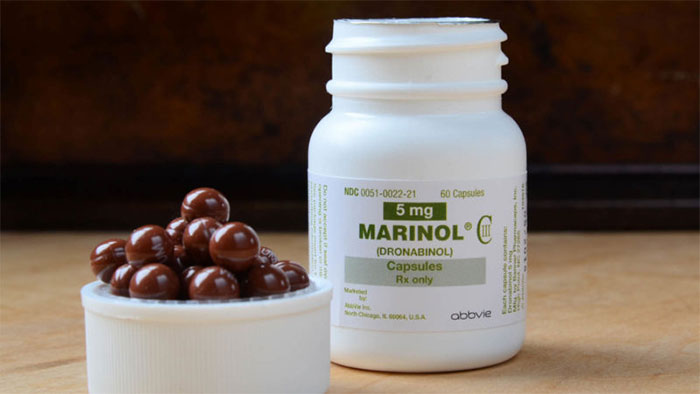
Marinol (generic name: dronabinol) is an artificial pharmaceutical form of cannabis approved by the US Food and Drug Administration (FDA). It is often used to treat nausea and vomiting in cancer patients undergoing chemotherapy.
Marinol continues to be used in the treatment of HIV patients suffering from loss of appetite and weight loss. The active ingredient in Marinol is a synthetic form of tetrahydrocannabinol (THC). THC occurs naturally in the cannabis plant. Marinol is taken orally in the form of a capsule. It has been available on prescription since 1985.
Marinol acts like the naturally occurring cannabinoids in cannabis. It binds to the receptors of the body's nervous system. Despite its similarity to the natural cannabinoids found in the cannabis plant, Marinol is completely synthetic and is produced in a laboratory environment.
Unfortunately, dronabinol is not as potent as the natural cannabinoids found in cannabis plants. It is not very soluble and the human liver metabolises the substance quickly, so only about 10-20% can effectively reach the body's circulation.
Cannabis contains more than 150 identifiable chemical compounds. These compounds are believed to work together to bring positive health effects. Unlike natural cannabis, dronabinol contains only the synthetic cannabinoid THC. Researchers now believe that various cannabinoids and other compounds must be present for the full medicinal potential to be realised.
Dry Sift Hash
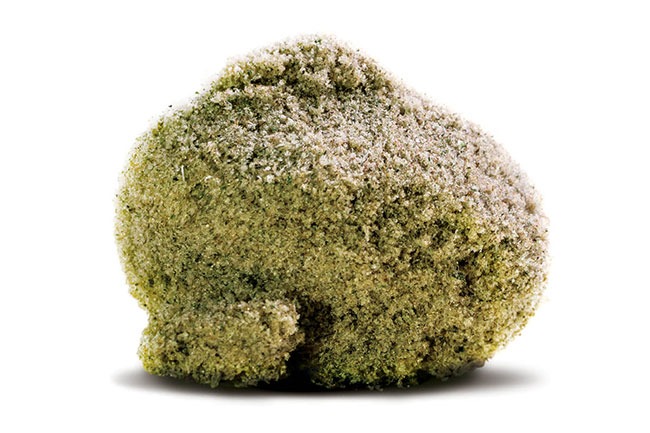
Dry Sift Hash has a granular consistency and retains the terpene profile of the flowers to be administered particularly well. In the Dry Sift Hash method, the trichome heads are separated from the other parts of the plant. A special fine-meshed microfabric is used for this purpose. No chemicals are needed in the production process and the finished material can be vaporised, smoked and mixed into food in a similar way to BHO. Dry-Sift-Hash melts and vaporises without residues and is particularly pure. In this method, the flowers are rubbed over the micro screen and the kief is collected.





